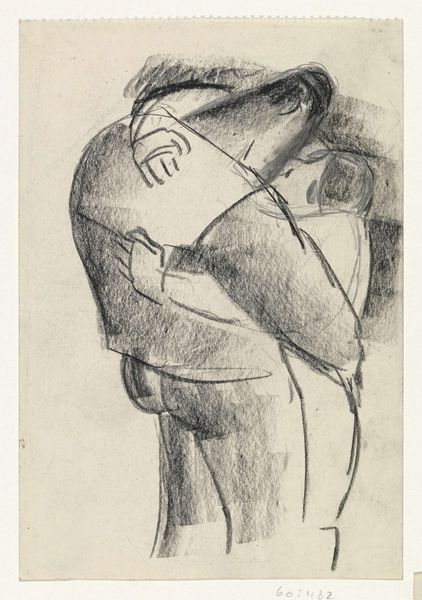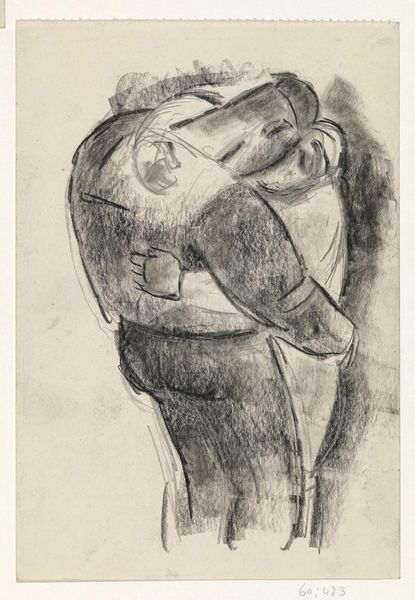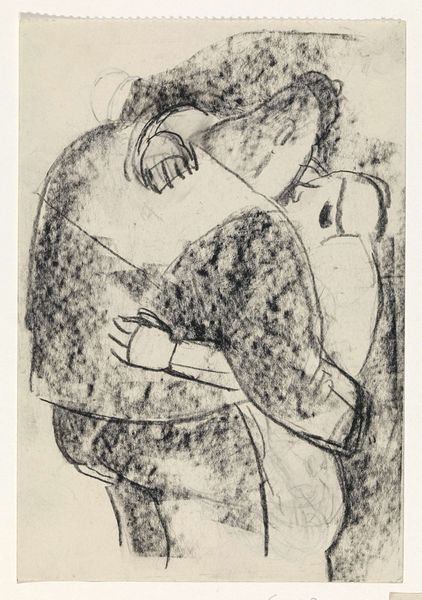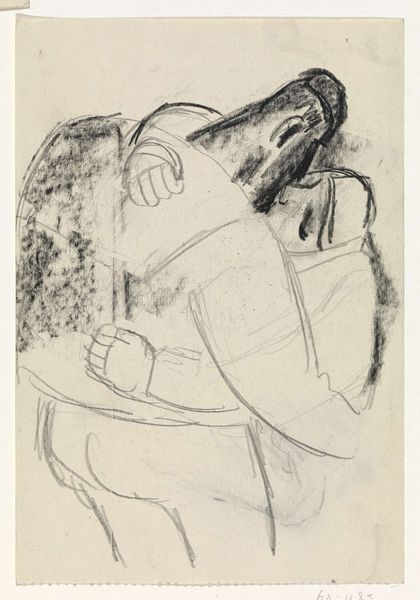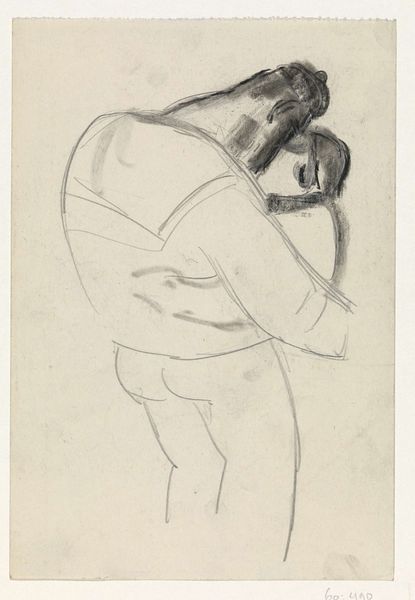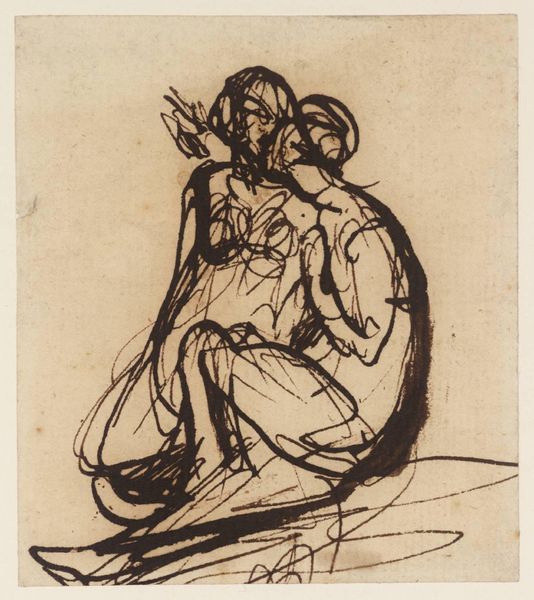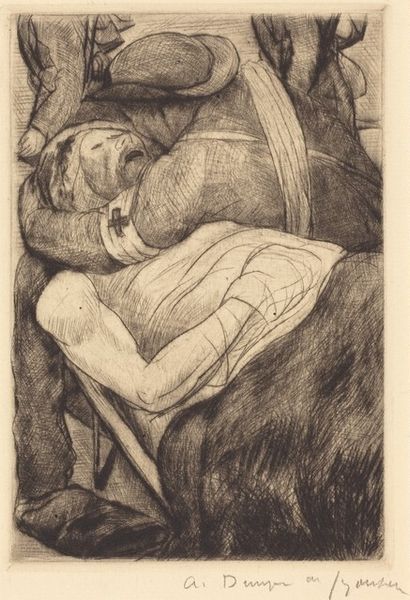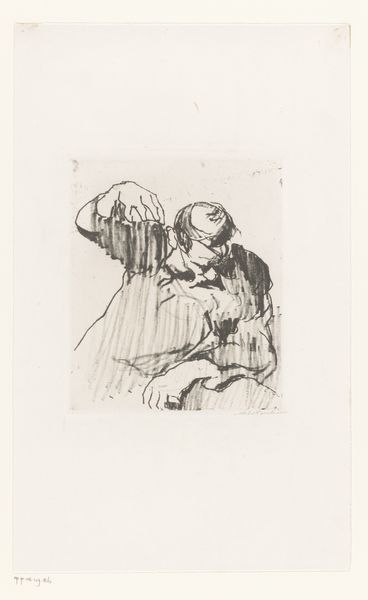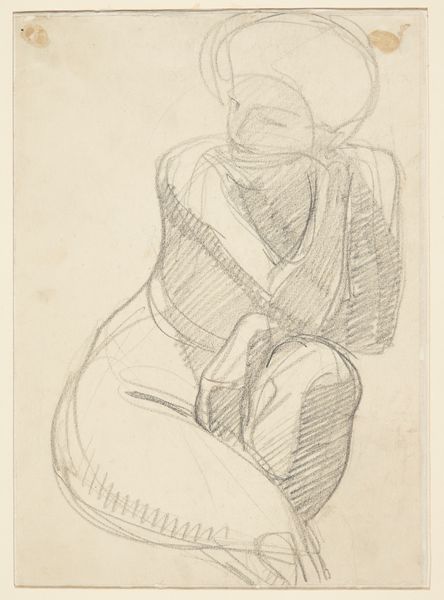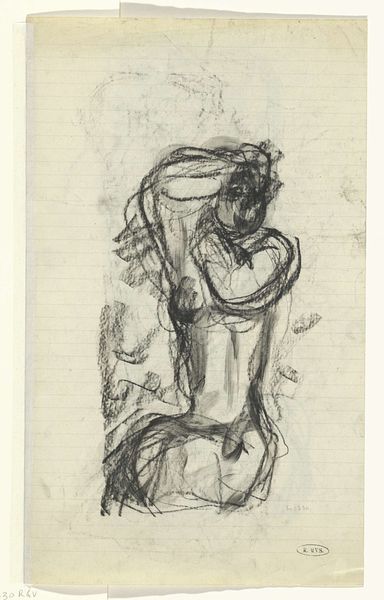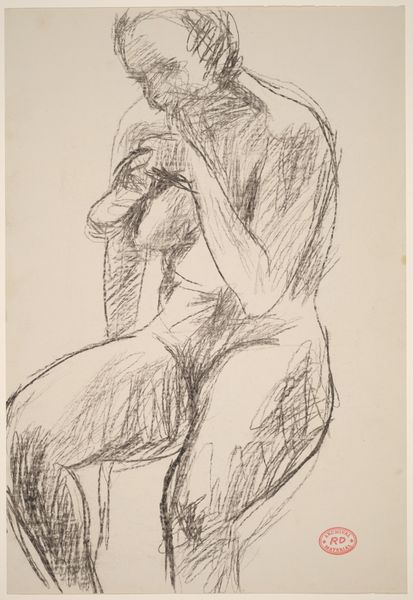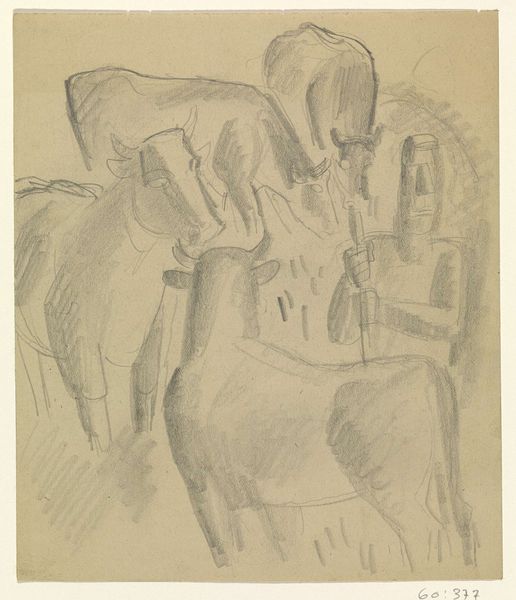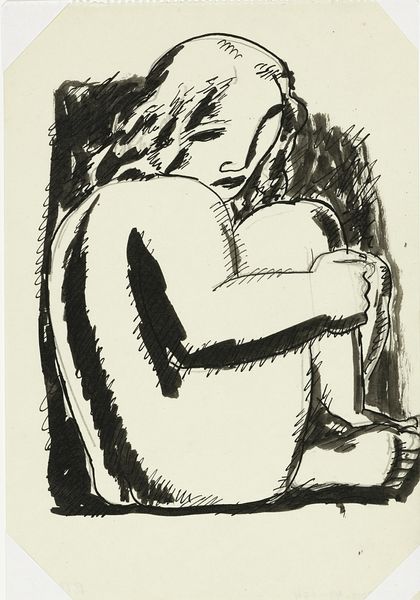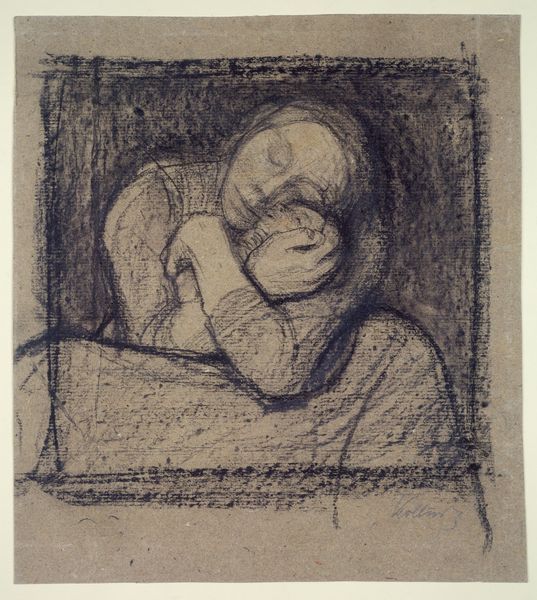
drawing, graphite
#
portrait
#
pencil drawn
#
drawing
#
toned paper
#
light pencil work
#
pencil sketch
#
figuration
#
personal sketchbook
#
pencil drawing
#
pen-ink sketch
#
expressionism
#
graphite
#
sketchbook drawing
#
pencil work
#
sketchbook art
Dimensions: height 196 mm, width 135 mm
Copyright: Rijks Museum: Open Domain
Editor: This is "Omhelzend koppel," or "Embracing Couple," a graphite drawing by Leo Gestel, created sometime between 1891 and 1941. It’s striking how intimate and yet undefined the figures are. What do you see in this piece beyond just the immediate image? Curator: Well, the beauty of Gestel's "Embracing Couple" lies in how it captures the raw emotion and vulnerability of human connection, particularly in the early 20th century when social norms surrounding intimacy were highly regulated. Think about it: the sketch aesthetic suggests a private, almost clandestine moment, possibly challenging those societal constraints. How do you see the embrace in terms of power dynamics? Is it mutual support or something else? Editor: I hadn’t really considered that aspect. It looks pretty mutual, almost like they're comforting each other. I guess I had a more straightforward reading, focusing on just affection. Curator: Right, and affection can be revolutionary. But let’s also consider how Expressionism often reflects inner turmoil and the search for authenticity. An embrace isn’t just physical; it's an act of solidarity, of shared humanity, especially powerful when society attempts to isolate and categorize people. Considering the period, who do you think might have needed or been denied this type of open embrace? Editor: Maybe LGBTQ+ individuals or those who didn’t conform to traditional gender roles? That actually makes a lot of sense when looking at how the figures blend into each other, almost losing definition. Curator: Exactly! The lack of clear definition can be interpreted as a blurring of identity, a rejection of rigid social categories. It prompts us to consider who is allowed to embrace, who is celebrated, and whose affection remains hidden or stigmatized. This artwork can serve as a reminder that even simple acts of love and support can challenge oppressive systems. Editor: That gives me a completely different perspective. I was initially drawn to its aesthetic qualities, but now I see its potential as a statement of social defiance. Curator: Precisely, and art's power lies in its ability to function on multiple levels, sparking conversations and challenging assumptions. It reveals that personal expression and intimacy are inseparable from the political landscape.
Comments
No comments
Be the first to comment and join the conversation on the ultimate creative platform.
